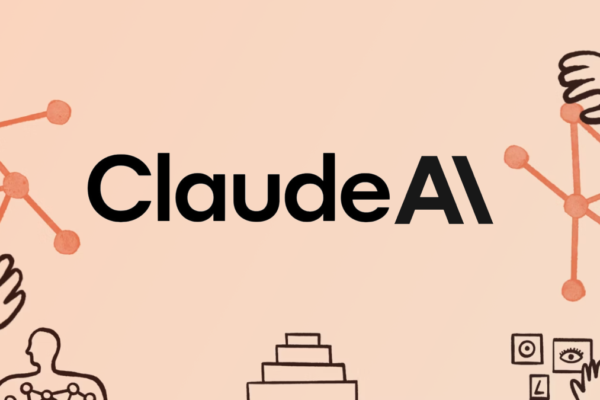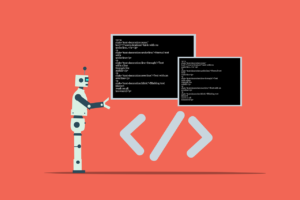Artificial Intelligence (AI) is revolutionizing industries, enhancing productivity, and reshaping our daily lives. From healthcare to finance, AI tools are at the forefront of innovation. In this blog post, we’ll explore some of the most powerful tools available for AI development, their applications, and how they are transforming the landscape of technology.
1. Machine Learning Frameworks
1.1 TensorFlow
Developed by Google, TensorFlow is one of the most popular open-source libraries for machine learning and deep learning. Its flexibility allows developers to build complex models with ease. TensorFlow supports both CPU and GPU computing, making it suitable for large-scale machine learning tasks. The library’s extensive documentation and community support make it an excellent choice for both beginners and experts.
Key Features:
- Scalability: TensorFlow can handle large datasets and complex computations.
- Ecosystem: It includes tools like TensorBoard for visualization and TensorFlow Lite for mobile deployment.
1.2 PyTorch
PyTorch, developed by Facebook, has gained immense popularity in the research community due to its dynamic computation graph. This feature allows developers to modify the network behavior on-the-fly, making it easier to debug and experiment with new ideas. PyTorch is particularly favored for its simplicity and ease of use, making it a go-to choice for many researchers.
Key Features:
- Dynamic Graphs: Facilitates real-time changes to the model.
- Strong Community: A wealth of tutorials and resources available online.
1.3 Scikit-learn
Scikit-learn is a powerful Python library for traditional machine learning algorithms. It provides simple and efficient tools for data mining and data analysis. Scikit-learn is particularly useful for tasks like classification, regression, and clustering.
Key Features:
- User-Friendly: Easy to integrate with other libraries like NumPy and pandas.
- Wide Range of Algorithms: Supports various algorithms for different tasks.
2. Natural Language Processing (NLP) Tools
2.1 Hugging Face Transformers
Hugging Face has become synonymous with state-of-the-art NLP. Their Transformers library provides pre-trained models for various tasks, including text classification, translation, and summarization. The ease of use and extensive documentation make it accessible for developers at all levels.
Key Features:
- Pre-trained Models: Save time by using models that are ready to deploy.
- Community Contributions: A vibrant community that continuously adds new models and features.
2.2 SpaCy
SpaCy is an industrial-strength NLP library designed for efficiency and performance. It excels in processing large volumes of text quickly and accurately. SpaCy is particularly useful for tasks like named entity recognition and part-of-speech tagging.
Key Features:
- Speed: Optimized for performance, making it suitable for production environments.
- Integration: Easily integrates with deep learning frameworks like TensorFlow and PyTorch.
2.3 NLTK (Natural Language Toolkit)
NLTK is one of the oldest libraries for NLP in Python. It provides a comprehensive suite of tools for linguistic data processing. While it may not be as fast as SpaCy, it is excellent for educational purposes and prototyping.
Key Features:
- Rich Resources: Includes corpora, lexical resources, and tutorials.
- Flexibility: Supports a wide range of NLP tasks.
3. Data Visualization Tools
3.1 Tableau
Tableau is a leading data visualization tool that helps businesses make sense of their data. It allows users to create interactive and shareable dashboards that illustrate trends, variations, and insights.
Key Features:
- User-Friendly Interface: Drag-and-drop functionality makes it accessible for non-technical users.
- Real-Time Data Analysis: Connects to various data sources for live updates.
3.2 Matplotlib and Seaborn
Matplotlib is a foundational plotting library in Python, while Seaborn builds on it to provide a high-level interface for drawing attractive statistical graphics. Together, they are essential for exploratory data analysis.
Key Features:
- Customization: Highly customizable plots to suit specific needs.
- Integration: Works seamlessly with NumPy and pandas.
3.3 Power BI
Microsoft’s Power BI is a powerful analytics service that provides interactive visualizations and business intelligence capabilities. It integrates well with other Microsoft products, making it a popular choice for organizations already using the Microsoft ecosystem.
Key Features:
- Data Connectivity: Connects to a wide range of data sources.
- Collaboration: Facilitates sharing and collaboration within teams.
4. Cloud Platforms for AI
4.1 Google Cloud AI
Google Cloud AI offers a suite of machine learning services that enable developers to build and deploy AI models. With tools like AutoML, users can create custom models without extensive coding knowledge.
Key Features:
- Pre-trained Models: Access to powerful models for various applications.
- Scalability: Easily scale applications based on demand.
4.2 AWS (Amazon Web Services) AI
AWS provides a comprehensive set of AI services, including Amazon SageMaker for building, training, and deploying machine learning models. AWS’s robust infrastructure supports large-scale applications.
Key Features:
- Flexibility: Supports various frameworks and languages.
- Integration: Seamlessly integrates with other AWS services.
4.3 Microsoft Azure AI
Azure AI offers a range of tools and services for building AI applications. Its Cognitive Services provide pre-built APIs for vision, speech, language, and decision-making tasks.
Key Features:
- Comprehensive Tools: A wide array of services for different AI needs.
- Enterprise-Ready: Designed for scalability and security.
5. Development and Collaboration Tools
5.1 Jupyter Notebooks
Jupyter Notebooks provide an interactive computing environment that allows developers to create and share documents containing live code, equations, visualizations, and narrative text. They are widely used in data science and machine learning.
Key Features:
- Interactivity: Run code in real-time and visualize results instantly.
- Documentation: Combine code with rich text for better understanding.
5.2 GitHub
GitHub is essential for version control and collaboration in software development. It hosts numerous open-source AI projects, making it a valuable resource for developers.
Key Features:
- Collaboration: Facilitates teamwork through pull requests and issues.
- Community: A vast repository of open-source projects and libraries.
5.3 Docker
Docker is a containerization tool that allows developers to package applications and their dependencies into containers. This ensures consistency across different environments, making deployment easier.
Key Features:
- Portability: Run applications in any environment without compatibility issues.
- Scalability: Easily scale applications by deploying multiple containers.
6. Specialized AI Tools
6.1 OpenAI GPT
OpenAI’s Generative Pre-trained Transformer (GPT) is a state-of-the-art language model capable of generating human-like text. It has applications in chatbots, content creation, and more.
Key Features:
- Versatility: Can be fine-tuned for various tasks, including translation and summarization.
- High-Quality Output: Generates coherent and contextually relevant text.
6.2 IBM Watson
IBM Watson is a powerful AI platform that offers various services for businesses, including natural language processing, machine learning, and data analysis. It is particularly strong in enterprise applications.
Key Features:
- Custom Solutions: Tailored AI solutions for specific business needs.
- Integration: Works well with existing business systems.
6.3 RapidMiner
RapidMiner is a data science platform that provides a user-friendly interface for analytics and machine learning. It is designed for both technical and non-technical users.
Key Features:
- Visual Workflow: Drag-and-drop interface for building models.
- Extensive Library: A wide range of algorithms and tools for data analysis.
Conclusion
The landscape of AI tools is vast and continually evolving. From machine learning frameworks to specialized AI applications, these tools empower developers and businesses to harness the potential of artificial intelligence. As technology advances, we can expect even more powerful tools to emerge, further transforming industries and enhancing our daily lives.








